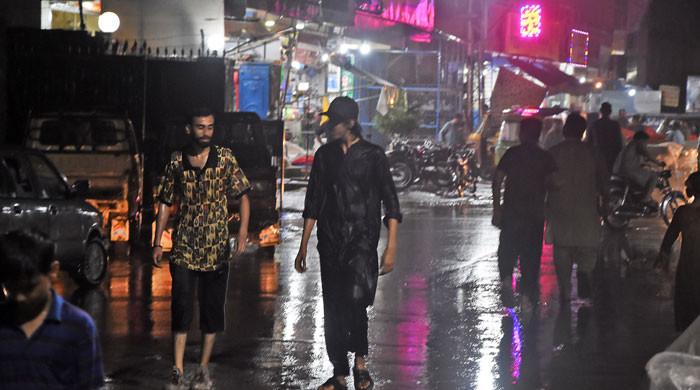The heavy rains together with the thunderstorms and the ray mistreated the twin cities of Rawalpindi and Islamabad on Saturday night, which caused local authorities to deploy heavy machinery along the main arteries and low areas to drain rainwater.
The twin cities have received more than 60 mm of rain so far, according to the managing director of the Water and Sanitation Agency (WASA).
WASA officials were on a maximum alert to deal with any emergency situation, said the MD, added that heavy machinery staff had deployed in low areas.
“The heavy machinery sent to the Chowk UnderPase Committee and Murree Road,” added the WASA officer.
The weather department recorded an 8 mm rain in Saypur, 24 mm in Shamsabad, 12 mm in Kacheri and 4 mm in Pirwadhai, the MD added.
He said that WASA officials were monitoring the water flow in Leh Nullah and other drains.
Today early, the National Disaster Management Authority (NDMA) has advised Azad Jammu and Kashmir (AJK) and Gilgit-Baltistan (GB) residents to take precautionary measures as possible sudden floods and landslides caused by storms and rains are expected on Saturday night.
The NDMA National Emergency Operations Center has indicated that it is expected that a meteorological system that enters northern Pakistan from the Arabic Sea and the Bengal Bay interacts with a western disturbance, which potentially provides strong rains, strong winds and thunderstorms towards Gilgit-Baltistan and Kashmir tonight, with a risk of flood sudden in water levels.
It is likely that rain, thunderstorms and racing winds affect chitral, dir, swat, Shangla, Buner, Malakand, Kohat, Nowshera, Charsadda, Swabi, Peshawar, Mardan, Abbottabad, Mansehra, Haripur and nearby areas of the night at night.
Severe climatic conditions could uproot weak trees and give rise to short -term power interruptions.
According to NDMA notice, strong winds and dust storms can damage buildings, vehicles, roofs and electric lines, while reducing visibility and increasing the risk of traffic accidents.
The public is urged to avoid trees, billboards and loose structures to guarantee personal safety during adverse climatic conditions.
According to the notice, heavy rains increase the risk of flooding in rivers and streams through affected areas. Mountain roads remain particularly vulnerable, with possible traffic interruptions due to earth landslides.
Residents have been advised in low regions to remain alert, since the waters of floods can represent a threat to property. Communication networks and energy supply systems also run the risk of intermittent interruptions due to adverse climatic conditions.
– With additional entry of the application.




